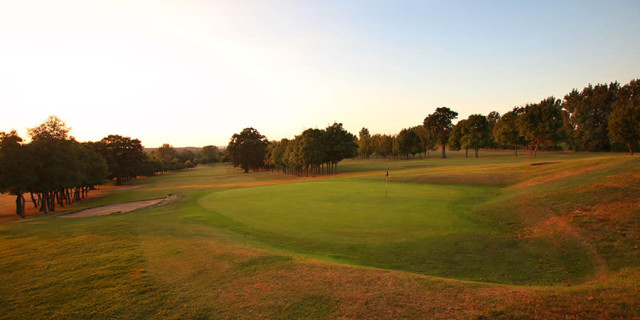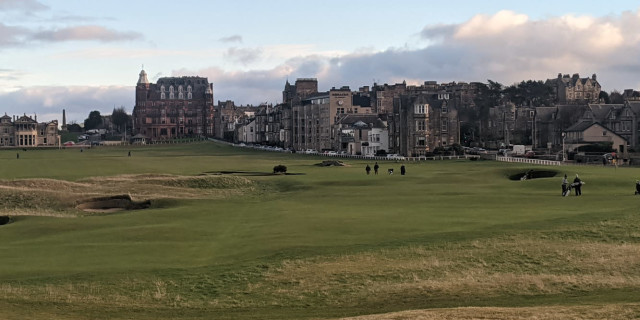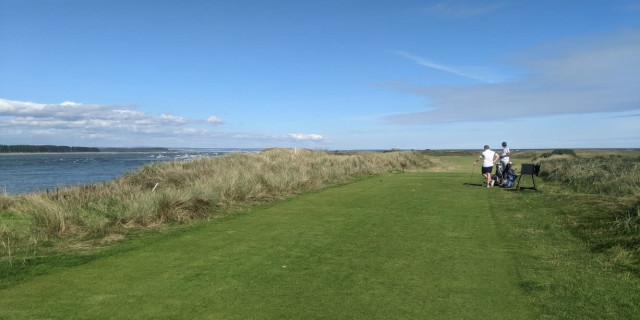
Everything You Need to Know About St Andrews
ST ANDREWS is, of course, known as the home of golf. But the Auld Grey Toun offers so much more to those who visit it.
It has a population of 18,500 and a student population of 10,000. The university is the third-oldest in the English-speaking world and the oldest in Scotland.
You may be surprised to learn that rainfall, at little more than 650 mm per year, makes St Andrews one of the driest parts of Scotland, shielded from Atlantic weather systems by several mountain ranges. Over 1 mm of rain is recorded on just under 117 days of the year.
Sunshine, averaging in excess of 1,500 hours a year is among the highest in Scotland, and comparable to inland parts of southern England. St Andrews is about the furthest north in Britain where annual levels of above 1,500 hours are encountered. Remember this when the sky turns black and the rain comes tumbling down during The Open.
There are seven golf courses in St Andrews - the Old Course, New Course, Eden, Jubilee, Castle, Strathtyrum and Balgove. And that’s before you take into account the likes of Kingsbarns and Fairmont St Andrews.
It is also the home of the World Golf Museum and boasts spectacular beaches, where you can try your hand at paddleboarding, surfing, land sailing and kayaking. West Sands Beach actually featured in the opening scene in the classic movie Chariots of Fire.
You all know about the town’s golf courses but there is so much more to know and explore.

The 18-acre botanic garden is located in the Canongate suburb to the south of the town. It contains more than 8,000 species of native and exotic plants. These are laid out in zones of woodland, meadow, shrubbery, herbaceous bedding, a large rockery and a series of ponds. There are also vegetable and herb gardens, and several large greenhouses, one of which contains a butterfly house.
St Andrews Aquarium is located on the cliff foot of the Scores overlooking West Sands. As well as the many fish species on display, there are also penguins and meerkats.
A municipal museum focusing on the history of the town of St Andrews was established in 1991 it is located in Kinburn Park and holds a collection of objects of historical value that are related to the town from the earliest times up to the 20th century
To the east of the town centre, lie the ruins of St Andrews Cathedral. At one time this was Scotland's largest building, originated in the priory of Canons Regular founded by Bishop Robert Kennedy. St Rule's Church, to the south-east of the medieval cathedral is said to date from around 1120.
Work on the cathedral was finally completed and consecrated in 1318 at a ceremony attended by Robert The Bruce. The cathedral and associated buildings, including St Rule's Church, are protected as a scheduled monument
The cathedral was the most important centre of pilgrimage in medieval Scotland and one of the most important in Europe. Pilgrims from all over Scotland came in large numbers hoping to be blessed, and in many cases to be cured, at the shrine of Saint Andrew. The presence of the pilgrims brought about increased trade and development.
The ruins of St Andrews Castle are situated on a cliff-top to the north of the town. The castle was first erected around 1200 as the residence, prison and fortress of the bishops of the diocese. Several reconstructions occurred in subsequent centuries.
The Scottish Parliament met in the town in 1304, when King Edward I, in his capacity as overlord of Scotland, came to be received by Bishop William de Lamberton.
In 1559, the town fell into decay after the Scottish Reformation. The university even considered moving to Perth.
In the 18th century, the town was still in decline, but was becoming known for having links 'well known to golfers’. By the 19th century, the town began to expand beyond the original medieval boundaries with streets of new houses and town villas being built.
Today, the economy is fuelled by golf, education and tourism.
Related Content
About the author

Derek Clements is a seasoned sports journalist and regular Golfshake contributor, specialising in tour coverage, opinion pieces, and feature writing. With a long career in national newspapers and golf media, he has reported on the game across Europe, the United States and Australia. A passionate golfer, he has played and reviewed numerous renowned courses, with personal favourites including Pebble Beach, Kingsbarns, Aldeburgh, Old Thorns and the K Club. His love of the game informs his thoughtful commentary on both professional golf and the wider golfing community.

The oldest & most prestigious major, a trip to The Open is a must for every golf fan. From tickets and transfers to hospitality & golf, Golfbreaks.com can build the perfect package to help you experience The Open in style.
Tags: The Open st andrews










